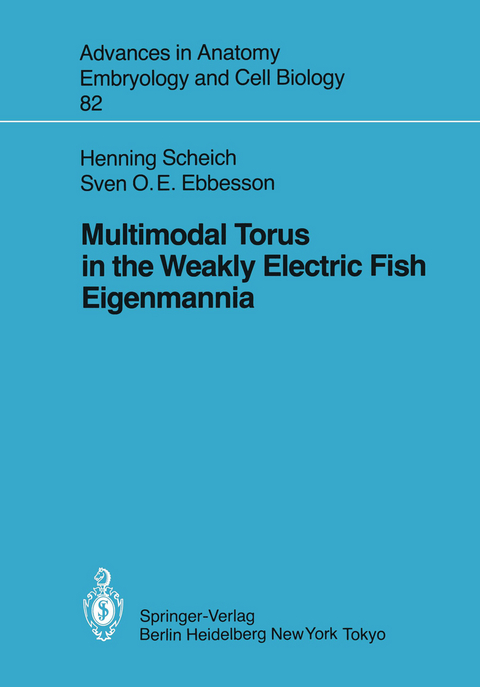
Multimodal Torus in the Weakly Electric Fish Eigenmannia
Springer Berlin (Verlag)
978-3-540-12517-4 (ISBN)
1 General Introduction.- 2 General Description of the Torus and Commissural Connections.- 2.1 Introduction.- 2.2 Material and Methods.- 2.3 Results.- 2.4 Discussion.- 2.5 Summary.- 3 Connections with the Posterior Lateral Line Lobe.- 3.1 Introduction.- 3.2 Material and Methods.- 3.3 Results.- 3.4 Discussion.- 3.5 Summary.- 4 Connections with the Mesencephalic Tectum.- 4.1 Introduction.- 4.2 Material and Methods.- 4.3 Results.- 4.4 Discussion.- 4.5 Summary.- 5 Connections with the Cerebellum.- 5.1 Introduction.- 5.2 Material and Methods.- 5.3 Results.- 5.4 Discussion.- 5.5 Summary.- 6 Connections with the Medial Octavolateralis Complex and with the Reticular Formation.- 6.1 Introduction.- 6.2 Material and Methods.- 6.3 Results.- 6.4 Discussion.- 6.5 Summary.- 7 Concluding Remarks.- 7.1 Organizational Frame of the Torus.- 7.2 Ascending Outputs of the Torus.- References.
| Erscheint lt. Verlag | 1.11.1983 |
|---|---|
| Reihe/Serie | Advances in Anatomy, Embryology and Cell Biology |
| Zusatzinfo | VIII, 72 p. 38 illus. |
| Verlagsort | Berlin |
| Sprache | englisch |
| Maße | 170 x 244 mm |
| Gewicht | 185 g |
| Themenwelt | Studium ► 1. Studienabschnitt (Vorklinik) ► Anatomie / Neuroanatomie |
| Schlagworte | fish • Grüner Messerfisch • nervous system • Skin • Striae medullares ventriculi quarti |
| ISBN-10 | 3-540-12517-5 / 3540125175 |
| ISBN-13 | 978-3-540-12517-4 / 9783540125174 |
| Zustand | Neuware |
| Haben Sie eine Frage zum Produkt? |
aus dem Bereich


